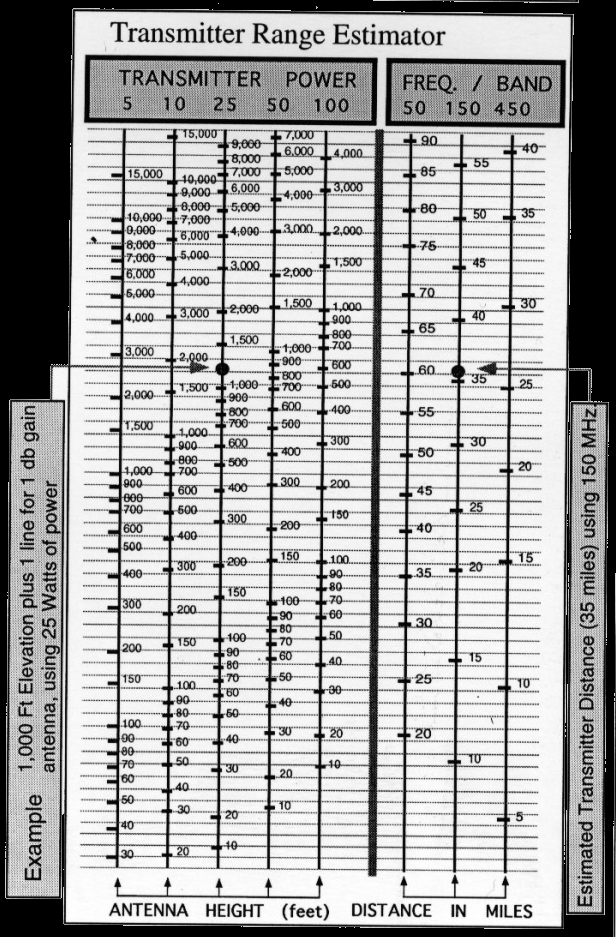Bob Simpleton's
Guide to
Transmitter Range
How far away can my signal be heard? That is perhaps the most often asked question in amateur radio. Unfortunately like most questions in this exciting hobby, the answer requires a little work.
We will focus on line of sight propagation on the VHF & UHF bands. These are the most common bands used by both mobile and base operations.
To properly estimate a signal's range, you must have a few important figures:
- Frequency/Band
- Transmitter power (in watts)
- Antenna height (from sea level)
- Antenna gain (net after coax loss)
Follow the six steps listed and you should have a fair estimate of your signal range.
These instructions assume a receive signal in the 1 microvolt range. One microvolt is considered a strong signal strength. Most modern radios have a .15 microvolt sensitivity.
If you wish to estimate the maximum distance you signal can be heard, you can move up the distance table six lines every time you divide the receive signal by one half. For a .5 micro volt signal, move up six lines. For a .25 microvolt signal, move up 12 lines.
While these figures are just an estimate, you'll find that they are usually reliable.
| The distance your signal will travel
can be calculated using the table below. (@ 1 micro-volt RX)
1. Locate the height of your antenna on the proper transmitter power column. 2. Find the line closest to that point. 3. Move up one line for every dB gain of your antenna system. 4. Move across the line to the proper vertical frequency band. 5. The closest number to the line is the distance in miles your signal will travel with a 1 micro-volt receive signal. 6. Move up six lines to calculate the .5 micro volt range. |

Simpleton's Guides (c) 1995 artsci inc. all rights reserved.
(818) 843-4080
URL - http://www.earthlink.net/~artsci